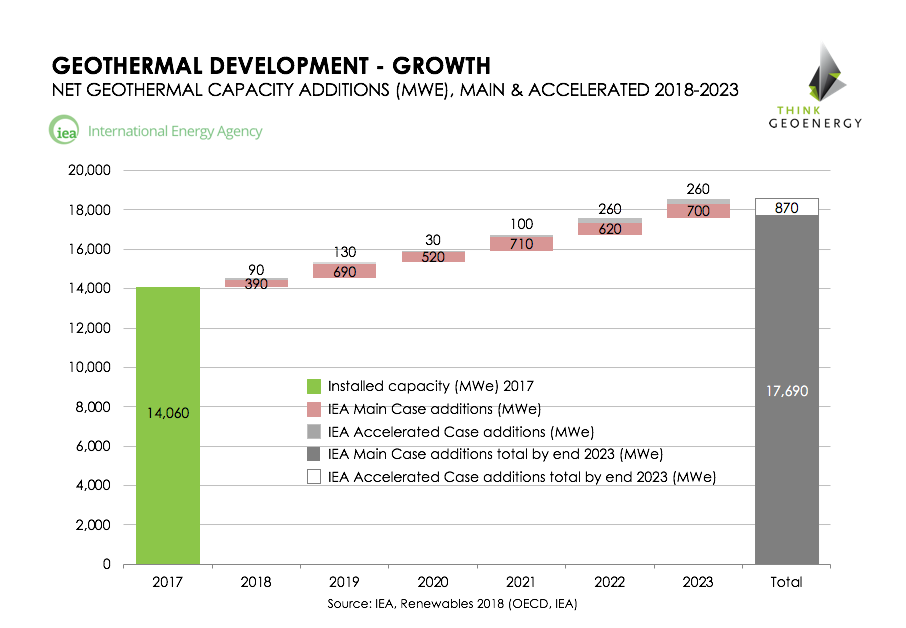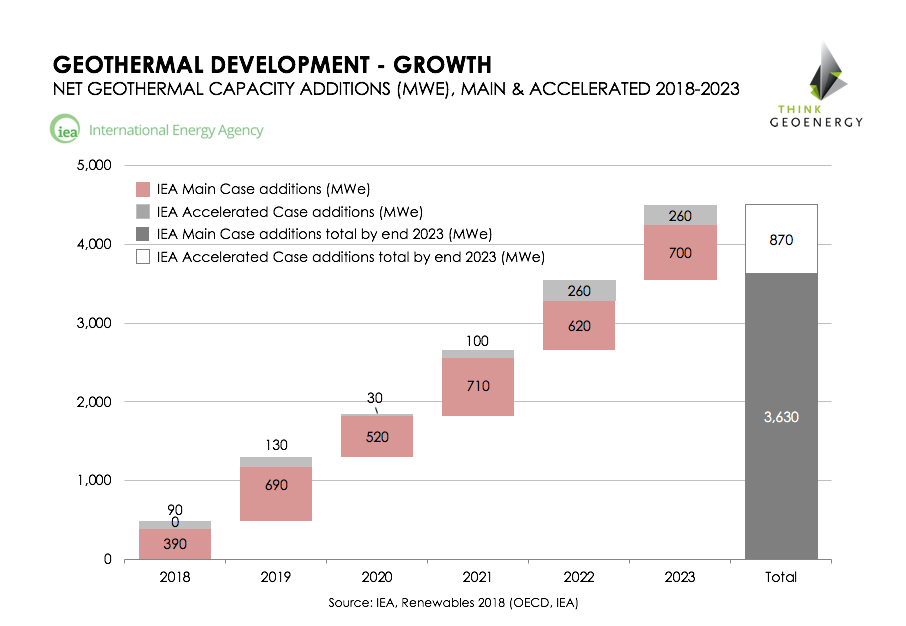IEA predicts geothermal growth of 3,600 to 4,500 MW 2018-2023
In its new report on renewables, the International Energy Agency (IEA) predicts a growth of geothermal power generation capacity of 3,600 to 4,500 MW over the period 2018-2023 at an average annual growth rate of around 4.7%.
In its Market Report “Renewables 2018”, the International Energy Agency (IEA) provides its analysis and forecasts to 2023.
According to IEA, the geothermal power generation capacity is to expand by 28% or around 4GW. While IEA says it would reach just over 17,000 MW, the actual figure might be more closer to 18,000 MW, according to the research done by ThinkGeoEnergy.
IEA describes the Asia-Pacific region (excluding China) as the largest area of growth with around 2,000 MW in additions over the period from 2018 to 2023. Indonesia will likely see the strongest growth due to its available geothermal resources and strong project pipeline in the construction face. Kenya, the Philippines, and Turkey follow, responsible for 30% of additions.
Despite geothermal energy pre-development risks still being an important barrier to securing financing for geothermal projects, exploration and construction of facilities in Latin American and Caribbean countries is expected to take off because geothermal technology generates stable, CO2 emissions free baseload power, as described by IEA.
Geothermal could grow by an additional 20%, or 900 MW, provided faster commissioning of the projects, mainly in emerging economies. Indonesia could deliver half of the potential growth while Kenya could add an estimated 180 MW as both countries advance in exploitation of their vast geothermal resources. China, Philippines and Turkey each could add around 70 MW of additional geothermal capacity while smaller additions could be seen coming online in Ethiopia and France.
In a positive addition, IEA actually provides room for the role of geothermal energy for heating. China and Turkey, according to IEA, alone account for 80% of consumption of geothermal heat in 2017, and while global consumption in geothermal has doubled over the 2012-2017 period, IEA only expects growth of 24% over the period of 2018-2023.
We consider this way too conservative based on the great potential and work done on geothermal heating in district heating networks in Europe and predominantly China.



















